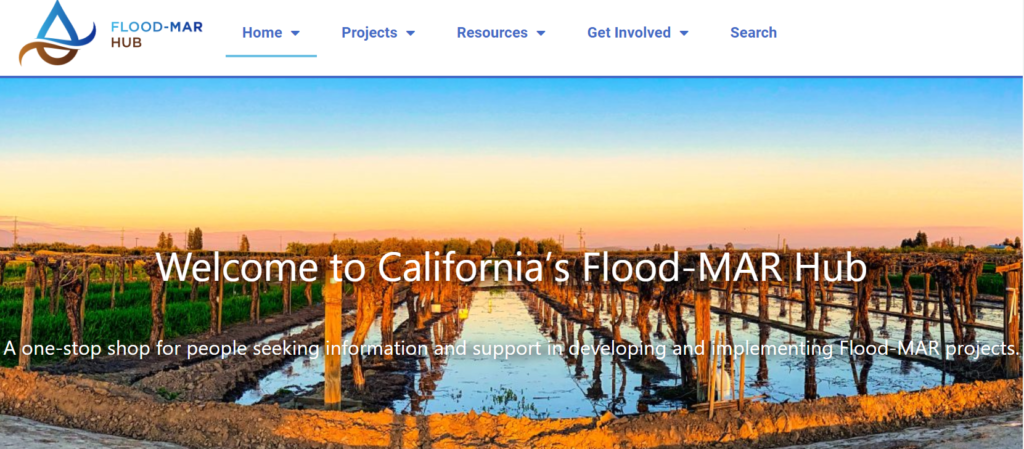2023 was an unprecedented year for groundwater recharge in California. Farmers, irrigations districts, government agencies, environmentalists and others cooperated as never before and improved statewide water supplies at low cost.

Improved cooperation between San Francisco and agricultural interests is also the key to restoring Hetch Hetchy Valley at low cost.
2023 was a very wet year, of course, which always helps to restore supplies stored both above and below ground.
But improvements in recharge in 2023 were also the result of deliberate management actions – as well as California’s Sustainable Groundwater Management Act, passed in 2014.
These improvements were highlighted by the presenters at last week’s Flood MAR (managed aquifer recharge) conference. The conference featured inspiring stories of farmers throughout the Central Valley flooding their fields with excess flows to recharge groundwater for their own, as well as their neighbors’, benefit.

Flood MAR is doing great work. The level of cooperation between water agencies, farmers, state government et al. is impressive.
Such recharge may seem like an obvious thing to do, and it’s ok to be frustrated that it has taken so long. But it is not as simple as one might think:
- Most farmers are small businesspeople. When they spread water on their fields, and especially in orchards, they worry about long term damage to their crops. Trees can die if their roots are flooded for too long;
- Sandy soils are much more conducive to recharge than other types of ground;
- Groundwater moves beneath the surface so much of the benefit goes to others; and
- Permitting can be onerous – some applications require 250 pages and the work of lawyers (who do not work for free).
Last May, Governor Newsom issued an Executive Order lifting the regulatory burden for many. In some cases, it is obvious that regulations get in the way. But it is also important for the health of our rivers and wetlands that reasonable limits be applied to how much and when water can be diverted. So it is less simple than we might like to get it right.
Indeed the Flood MAR conference included an impressive array of people dedicated to sustainable water management in California. Karla Nemeth, Director of the California Department of Water Resources, inspired the crowd on the first day and told of Governor Newsom’s commitment to capturing floodwaters. Several farmers told stories of how they flooded their fields last winter and spring and what complications arose. Engineering firms explained how their data analysis helped identify the best opportunities for recharge. And environmental groups, including Sustainable Conservation and the Environmental Defense Fund, played important roles in both the adoption of policies and implementation of specific projects.
Professor Graham Fogg of UC Davis was among those encouraged by the progress of farmers and irrigation districts working together to improve recharge, but noted that what was done in 2023 represented only a small portion of what is possible. Only about one in four years is wet enough to do these projects, and he hoped that many more fields would be flooded in the next wet year.
The level of cooperation in reminiscent of what Secretary of Interior Donald P Hodel found when he asked the Bureau of Reclamation to analyze opportunity to restore Hetch Hetchy Valley in 1987. The Bureau told him that more water would be available if San Francisco were able to cooperate with the irrigation districts on the Tuolumne River,
Restore Hetch Hetchy continues to work cooperatively (and relentlessly) with San Francisco to invest in groundwater storage in the Central Valley. For more information, see Yosemite’s Opportunity: Options For Replacing Hetch Hetchy Reservoir.
